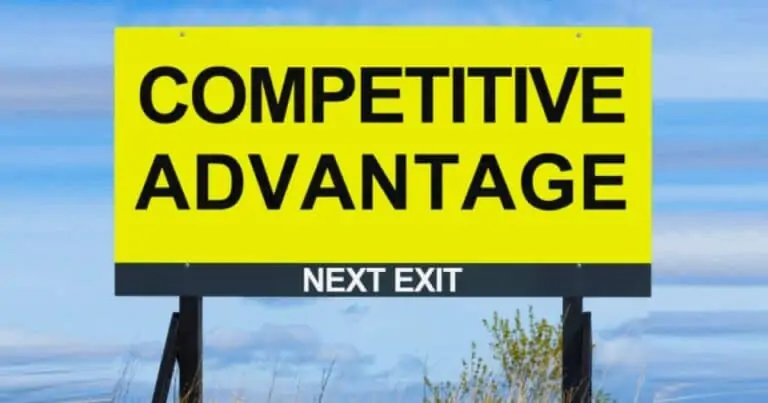As a mid-size retailer, you can likely identify – to the penny – how much it costs to order, store, and deliver your products. But if you were told tomorrow that your company was planning to add a number of stores in the next 36 months would you jump right in and simply scale the way you currently do business?
You’d probably immediately focus your thoughts and energy on vendor capacity, distribution center locations, transportation sources, inventory levels, personnel to handle it all, and about a dozen other things necessary to allow you to get to that kind of growth.
But is that the smartest way to approach growth? Is scaling your processes as it is now the right move?
Mid-size retailers considering a growth strategy that includes adding locations and increasing online catalogs know that their biggest risk is growth from the topline that comes at the expense of the bottom line. In addition to the hard costs of bricks-and-mortar, there are significant costs associated with scaling up the supply chain to handle more goods and transactions: larger teams of employees, more money tied up in inventory, skyrocketing shipping costs, stock-outs and surplus – which represents real cost – become that much more variable and frequent.
One of the best ways to avoid the top-line-at-the-sake-of-bottom-line growth is to optimize the supply chain in its entirety: from demand forecasting to inventory planning, from allocation/replenishment to transportation planning. End to end planning means being able to model all the different stages, scenarios, and objectives of a supply chain at the same time – concurrently. To do this successfully, a retailer must have a complete picture of their supply chain in one dynamic automated platform. Yet most retailers today rely on simple “homemade” systems or Excel, to bring together disparate supply chain tools and ERP systems wasting valuable time and resources for sub-par planning.
One of our customers, A101, a hard discount retailer, is a good example to demonstrate the impact sound supply chain planning can have on an organization. Through multi-objective, simultaneous modeling, A101 was able to add 2,000 new store locations without adding a single supply chain planning personnel. Furthermore, despite the enormous pressure of planning for 2,000 new stores, A101 reduced standing inventory by 8%, (which translates to about $8.1M reduction in average inventory) while decreasing store stock-outs by 30%, resulting in a net margin contribution of $1.7M within the first year. You can download the A101 case study at the bottom of this post.
How does all this translate into a competitive advantage? Through intelligent scaling, automation and optimization, you’ll effectively take the risk out of profitable growth.Imagine knowing your supply chain is precisely optimized to not only reduce your total cost to serve but significantly increase your performance against customer expectations! The beauty of exception-based planning and multi-objective modeling is the best decisions are reached faster, more accurately with only outliers requiring your attention. Streamlined operations, future focused planning and improved margins puts you in the best position to outperform any competitive threat and focus on what matters most – your customers!

You’d probably immediately focus your thoughts and energy on vendor capacity, distribution center locations, transportation sources, inventory levels, personnel to handle it all, and about a dozen other things necessary to allow you to get to that kind of growth.
But is that the smartest way to approach growth? Is scaling your processes as it is now the right move?
Mid-size retailers considering a growth strategy that includes adding locations and increasing online catalogs know that their biggest risk is growth from the topline that comes at the expense of the bottom line. In addition to the hard costs of bricks-and-mortar, there are significant costs associated with scaling up the supply chain to handle more goods and transactions: larger teams of employees, more money tied up in inventory, skyrocketing shipping costs, stock-outs and surplus – which represents real cost – become that much more variable and frequent.
One of the best ways to avoid the top-line-at-the-sake-of-bottom-line growth is to optimize the supply chain in its entirety: from demand forecasting to inventory planning, from allocation/replenishment to transportation planning. End to end planning means being able to model all the different stages, scenarios, and objectives of a supply chain at the same time – concurrently. To do this successfully, a retailer must have a complete picture of their supply chain in one dynamic automated platform. Yet most retailers today rely on simple “homemade” systems or Excel, to bring together disparate supply chain tools and ERP systems wasting valuable time and resources for sub-par planning.
One of our customers, A101, a hard discount retailer, is a good example to demonstrate the impact sound supply chain planning can have on an organization. Through multi-objective, simultaneous modeling, A101 was able to add 2,000 new store locations without adding a single supply chain planning personnel. Furthermore, despite the enormous pressure of planning for 2,000 new stores, A101 reduced standing inventory by 8%, (which translates to about $8.1M reduction in average inventory) while decreasing store stock-outs by 30%, resulting in a net margin contribution of $1.7M within the first year. You can download the A101 case study at the bottom of this post.
How does all this translate into a competitive advantage? Through intelligent scaling, automation and optimization, you’ll effectively take the risk out of profitable growth.Imagine knowing your supply chain is precisely optimized to not only reduce your total cost to serve but significantly increase your performance against customer expectations! The beauty of exception-based planning and multi-objective modeling is the best decisions are reached faster, more accurately with only outliers requiring your attention. Streamlined operations, future focused planning and improved margins puts you in the best position to outperform any competitive threat and focus on what matters most – your customers!









